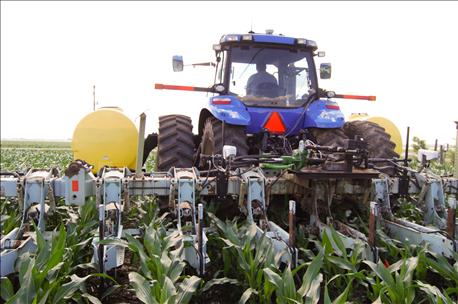
Note: You can listen to my conversation with Mike Zwingman by clicking on the audio file at the end of this blog.
In the latest Nebraska Notebook, we visit with Mike Zwingman, agronomy R&D manager at Central Valley Ag, on using a whole-systems approach to nitrogen management. This involves bringing a number of nitrogen management pieces, including management practices and tools together in three different categories: evaluation, planning and execution.
Tools like nitrogen models, pre-sidedress nitrate tests (PSNTs) and soil sampling can fall under planning and evaluation, while tools like GreenSeeker or Optrx sensors, strip till, high-clearance machines and Y-Drops fall under execution.

CONTINUOUS CYCLE: Every time growers make the decision to apply nitrogen, they go through that same cycle of evaluation, planning and execution, says Mike Zwingman. Each time they go through this cycle, they're getting more efficient at applying nitrogen.
Each time growers make the decision to apply nitrogen, they're going through that same cycle of evaluation, planning and execution, Zwingman says. "The more times we make that decision, the more times we're running that cycle; the more times it cycles, the higher our efficiency gets. There's always going to come a point where we can't raise our efficiency enough to overcome the cost of execution. So we have to find what's right for you," he says. "We're going to pull tools out of every bucket to fit your operation specifically, and your bucket might not be the same as your neighbor's bucket."
In the next 12 months, Zwingman notes Central Valley Ag will be working with growers to take nitrogen and water management to the next level. This three-category cycle will be a part of that, with Zwingman and Keith Byerly, Advanced Cropping Systems manager at CVA, serving as technical advisers. Taking a bottom-up approach with this program, Zwingman says the goal is to allow growers to share their experiences with one another on different management practices they use and what works for them in their growing environment, and hopefully, learn something from one another.
This way, growers can work within the same framework of decision-making steps, but manage in a way that fits their growing environment and their economic situation and production system.
"Whatever we do in nitrogen and water management in the future, it has to make sense, and our growers have to be mission-capable to be able to execute, to a certain extent, on their own. If they have to rely on a lot of outside sources to execute these things, the cost is going to be too high," Zwingman says. "That's why we're putting this group together. It's really to build a system that fits the center of what we've got to do, but gives us latitude to personalize it across thousands of farms."
About the Author(s)
You May Also Like






